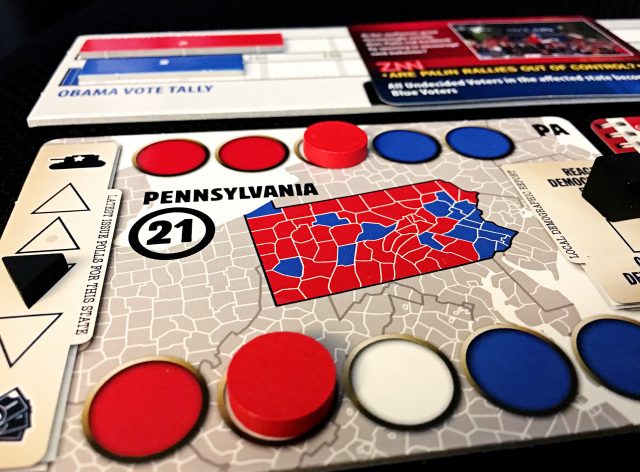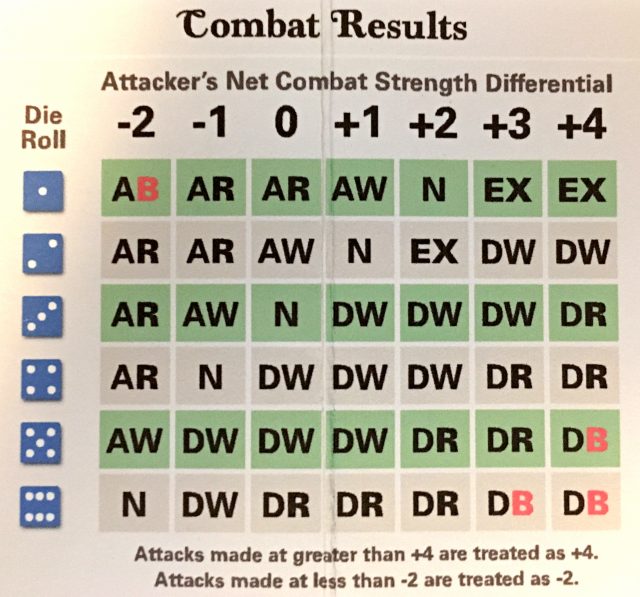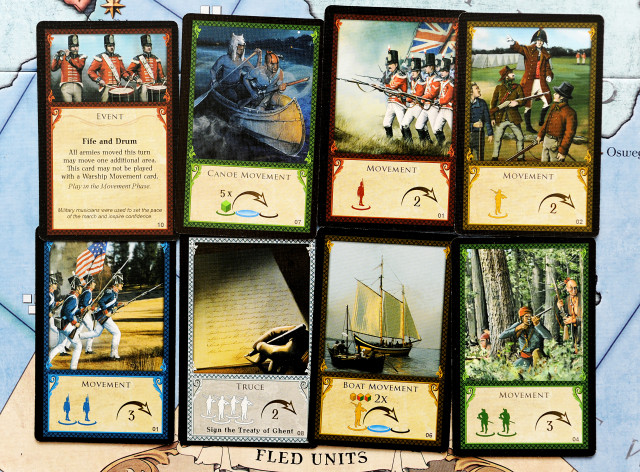Playing at war is obviously nothing new. Model soldiers have been discovered in tombs over three thousand years old, although I don’t know whether they were used to simulate battles, or were just there for show. Ancient games like Shogi, Xianqi, Chess, and Go are, arguably, wargames in abstract form. Playing and mastering them were certainly considered marks of good strategic thinking.
 Not til the mid-19th century, though, and the rise of Prussia, do we have records of actual generals trying to simulate actual battles and campaigns using elaborate sets of rules incorporating real-life terrain and logistical issues. These were called Kriegspiel–”war-games”–and were soon being used by all the Great Powers in the decades leading up to World War I.
Not til the mid-19th century, though, and the rise of Prussia, do we have records of actual generals trying to simulate actual battles and campaigns using elaborate sets of rules incorporating real-life terrain and logistical issues. These were called Kriegspiel–”war-games”–and were soon being used by all the Great Powers in the decades leading up to World War I.
Meanwhile, H.G. Wells, the author of War of the Worlds, published a short book in 1913 called Little Wars which outlined a set of rules for taking those gorgeous painted little army men off your bookshelf and actually fighting battles with them. Wells’ fame as an author meant that these rules were the first to be read and used on a wide scale and, in fact, formed the basis of most miniature-based wargames that followed all the way up to Warhammer 40K and Flames of War, which enjoy huge fanbases today.
Which brings us to Charles Roberts. In 1953, Charles Roberts changed history, and how we see it.
In that year, this man in his early twenties, who worked full-time in advertising, convinced a local publisher in Pennsylvania to publish a game he’d designed called Tactics. In it, two players representing generic post-WWII armies represented by little chits of cardboard fought on a map divided into squares. By 1958 he’d managed, by dint of his own efforts, to sell 2,000 copies of the game. Roberts was convinced there was an untapped market out there for games like Tactics. Whereupon he decided to take the plunge and start his own company, which would specialize in selling games–not to children, the traditional market, but to adults. He called his company Avalon Hill.
And an industry was born.
Avalon Hill went on, over the next thirty-odd years, to produce some  of the most influential games in the tabletop history. Not all of them were military-themed; Roberts wanted his games to cover a broad range of themes to reflect the interests of his audience. There were sports games, law games, abstract games; in 1964 they published Acquire, possibly one of the best stock-holding business games ever (and it’s still in print, though not by Avalon Hill). But it was the games about battles, campaigns, and wars, that we’re focusing on here. They were the first modern wargames (or conflict simulations, or ‘consims’).
of the most influential games in the tabletop history. Not all of them were military-themed; Roberts wanted his games to cover a broad range of themes to reflect the interests of his audience. There were sports games, law games, abstract games; in 1964 they published Acquire, possibly one of the best stock-holding business games ever (and it’s still in print, though not by Avalon Hill). But it was the games about battles, campaigns, and wars, that we’re focusing on here. They were the first modern wargames (or conflict simulations, or ‘consims’).
In the early 1960’s the centenary of the American Civil War led to a boom in interest into that conflict–and of course, World War II and its Cold War aftermath were always in the news. Plus, the post-WWII Baby Boom generation was well into its teens, and there were millions of them out there with an interest in war-themed games.
But ironically, just as demographics and pop culture aligned perfectly for Avalon Hill to exploit them, Roberts’ mis-management put it out of business. He sold the company to one of its major creditors and moved on. His role in this story ended, but the people who took over from him grew the hobby into its modern form, and entrenched (pun intended) many norms and concepts:
 Over the coming decades these were tweaked, revisited, and/or tossed out the window, but even today you can recognize a wargame by how many of the above you can check off.
Over the coming decades these were tweaked, revisited, and/or tossed out the window, but even today you can recognize a wargame by how many of the above you can check off.
The period between the late 1960’s and early 1980’s was a golden age for wargaming. Hundreds of titles were released, not only by Avalon Hill but also companies like Simulations Publications, Inc. (SPI) and Game Designers Workshop (GDW) as well as numerous smaller publishers. Games got larger and more historically accurate, which meant that rules got longer and playing times grew from a couple of hours to an evening to a weekend to literally weeks for some mega-scenarios. But the fanbase ate it up, kept growing, and the sky seemed the limit.
Then in the 1970’s Dungeons and Dragons arrived, soon followed by video games. The fanbase levelled off, then began to shrink dramatically. Despite attempts to enter both new markets, by the mid-1980’s SPI had gone bankrupt and been sold to TSR, the publishers of  D&D. Avalon Hill was a shadow of its former self, and GDW hung on by virtue of its Traveller RPG franchise. 1993’s Magic: the Gathering was yet another nail in the coffin. Cardboard-and-map wargames were now something grey-bearded men played off to the side, while the cool kids tapped cards and buttons.
D&D. Avalon Hill was a shadow of its former self, and GDW hung on by virtue of its Traveller RPG franchise. 1993’s Magic: the Gathering was yet another nail in the coffin. Cardboard-and-map wargames were now something grey-bearded men played off to the side, while the cool kids tapped cards and buttons.
And yet, the hobby did not disappear entirely. The rise of the Internet and sites such as https://grognard.com/ brought fans together like never before. New companies, such as GMT, MMP, and Victory Point Games sprang up which used on-demand publishing and pre-ordering to stay afloat. More importantly, perhaps, the game designs themselves evolved to reflect changes that had occurred with the rise of Eurogames, making consims more n00b-friendly to curious tabletop gamers.
The success of games like Twilight Struggle, Through the Ages, and Paths of Glory show that there is still a considerable audience out there of people who are interested enough in history (even the nasty bloody parts) to spend the money and time needed to bring it to the table.
 If your appetite has been whetted by what you’ve read, here are some recommendations on where you might want to start. All are playable in a couple of hours (once you’ve got a handle on the rules). They’re listed roughly in order of complexity.
If your appetite has been whetted by what you’ve read, here are some recommendations on where you might want to start. All are playable in a couple of hours (once you’ve got a handle on the rules). They’re listed roughly in order of complexity.
What is it they say about those who don’t know their history? I forget. Well, anyway, whatever it is, you won’t have that problem if you decide to dip your musket/rifle/AK47 into the consim waters.
Note: much of the historical information in this article was taken from two sources:
Both books, though now forty years out of date, are still excellent introductions to the hobby, though of course most of the games they reference are now hard-to-find and out-of-print.
[…] Everything you wanted to know about war games, but were afraid to ask… The Daily Worker Placement has you covered with this Wargaming 101 history primer and guide. It is a quick-hitting examination of how and why war games developed, prospered, declined and then returned, followed by some recommendations for noobs looking to dive into the genre. Source: http://dailyworkerplacement.com/2017/05/22/wargames-101-or-how-you-can-learn-to-stop-worrying-and-lo… […]
Excellent.
Thank you for your text.
It reminds me of campaign manager. I want to play it again. And i have to find and b buy the game Fog of war